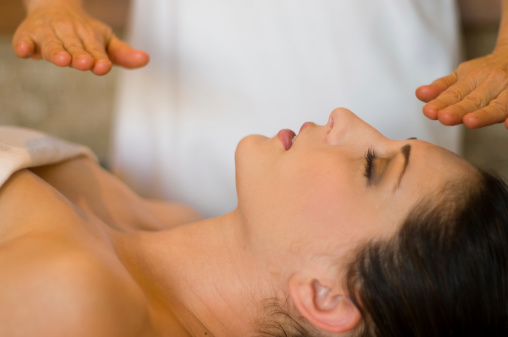I don’t generally introduce myself as a third-degree Reiki master. That’s because introducing yourself as the master of anything seems just about the most obnoxious way to begin any new acquaintance, for one thing. Plus, I don’t generally meet many people who know what Reiki is. Generation Z, however, has made Reiki a popularly trending hashtag on TikTok.
What is Reiki?
The word “reiki” is Japanese for “divine energy”. It is a complementary therapy—a form of touch-free energy healing that draws on invisible energy known as ki. Traditional Asian medicine believes that this energy exists within channels in the body, and a harmonious flow of ki leads to good health. The form of Reiki most commonly practiced today was codified by Buddhist layman Dr. Mikao Usui in the early 20th century. Usui’s student, Dr. Chujiro Hayashi, taught the method to a young woman, Hawayo Takata, who had begun as his patient. Takata, a Japanese-American, returned to Hawaii and embarked on a decades-long career of imparting the knowledge of Reiki to mostly Western students.
Science and Reiki
Reiki has been adopted in modern healthcare settings as a complementary therapy to treat physical and mental health indications. However, its effectiveness is still being evaluated as more research is carried out. Studies at prestigious medical research facilities like those of Harvard and Yale have yielded some evidence that being the recipient of a Reiki healing could help patients seeking relaxation, help with chronic pain and sleeplessness.
Reiki and TikTok
I earned my Reiki credentials through a course on the online learning platform Udemy. I first became aware of the vibrant TikTok Reiki community through a post in a Facebook group for fellow graduates of this course. The post was of a young woman with her hands posed in some arcane mudra, flicking her fingers at the viewer rapidly. The response was basically one of mystification. Reiki courses didn’t teach these hand movements to us. Reiki is generally performed by laying your hands just above the patient’s body, remotely tapping into the energy field.
TikTok features millions of Reiki posts, most featuring young, erstwhile Reiki healers in their late teens and early 20s—”Gen Z-ers.” Dressed in trendy clothes, surrounded by spiritualist effluvia like crystals and cactus plants, sound healing bowls, and smudge sticks, they speak in low, calming voices in the manner of equally popular ASMR videos, announcing that if you comment “yes” (for you must always have the patient’s permission to perform a healing), you will receive healing energy. They flick their hands supposedly to transmit the energy more quickly and also “pluck” negative energy from their commenters’ auras.
It would be easy to dismiss these “ReikiTok” healers. Their methods are not those I learned—passed down from Usui to Hayashi to Takata and beyond. However, I can’t find myself being troubled about authenticity and lineage because the ReikiTokkers most assuredly are not. They are a DIY generation, bold and inventive young people who use social media not to craft their image, as Millenials like myself did, but to show the world what they are crafting. They are also a generation who has grown up amid the most heated debates and the most explosive flashpoints around climate change, social justice, global economic inequity, and healthcare. The imperative to change the world for the better is a pressing one, and the need for reassurance and comfort is one they can’t escape.
It is fitting that this generation has become fascinated with the discipline. Each Reiki healing begins with setting the intention that the energy, the ki, will benefit the patient for their greatest and highest good. On TikTok, with no need of teachers or masters, Generation Z is reaching out to heal each other amidst the war zones and plagues stalking their youth.
More From LWOS Life
Make sure to stay tuned to LWOS Life for more on this and other stories from around the world of entertainment, culture and more, as they develop. You can always count on LWOS Life to be on top of the major news in the world of entertainment; whilst also providing you with editorials on everything from beer to movie reviews.
Featured image credit

